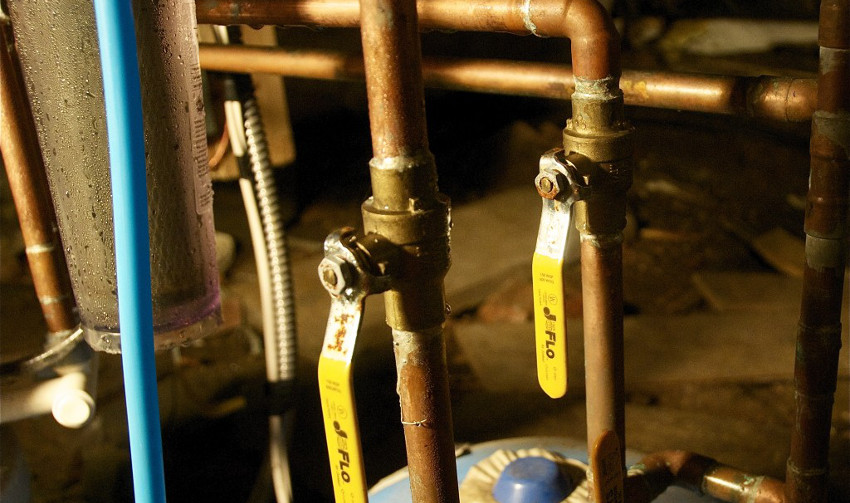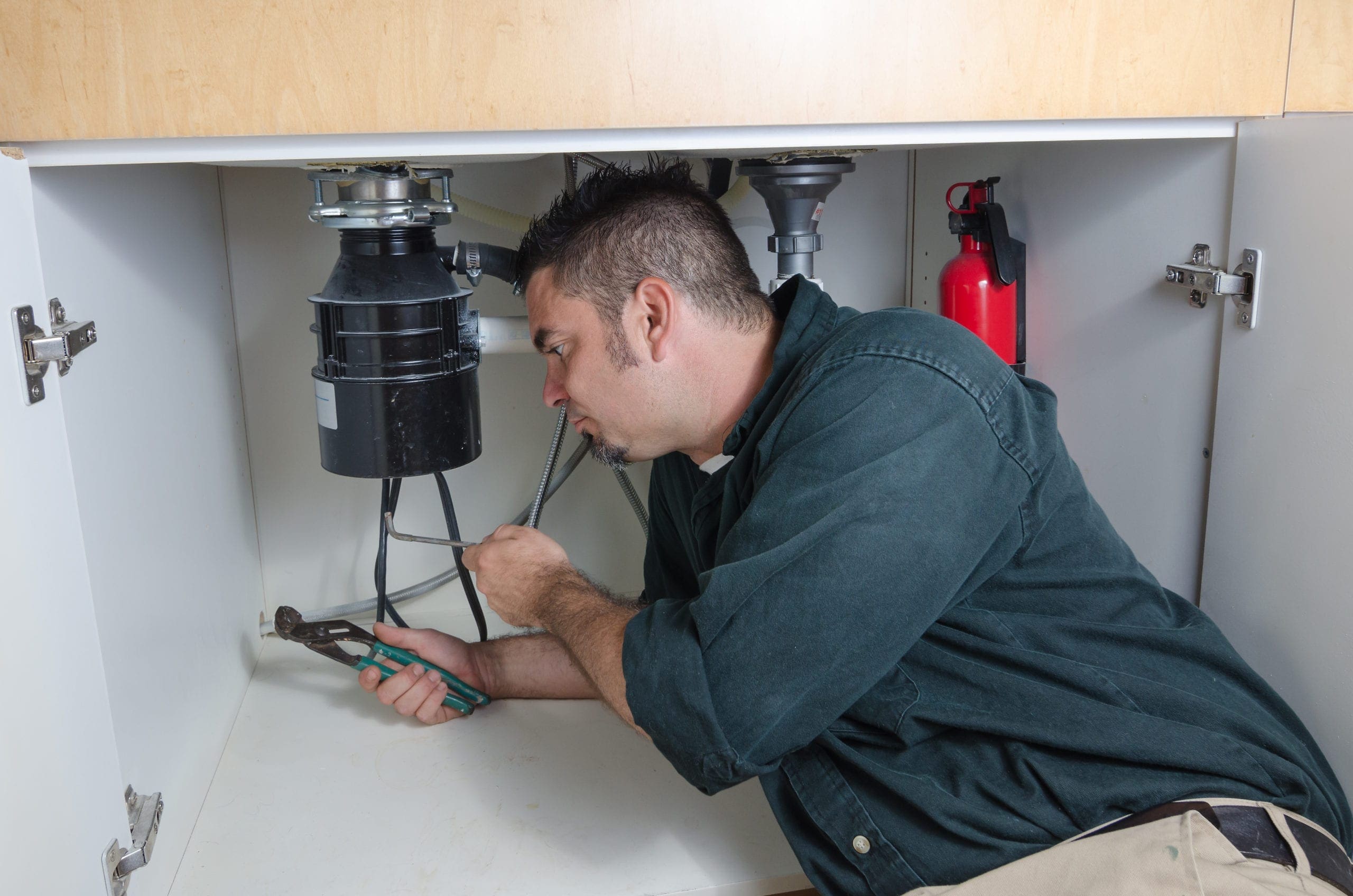Efficient Approaches To Quiet Plumbing Sounds
DetailsWe've discovered this post pertaining to Why Do My Plumbing Pipes Make A Knocking Noise listed below on the internet and reckoned it made good sense to write about it with you on my blog.

To identify loud plumbing, it is very important to establish very first whether the undesirable noises take place on the system's inlet side-in other words, when water is transformed on-or on the drainpipe side. Noises on the inlet side have varied reasons: excessive water stress, worn valve and also faucet parts, improperly connected pumps or various other devices, incorrectly put pipeline fasteners, as well as plumbing runs having way too many tight bends or other constraints. Noises on the drainpipe side generally stem from bad area or, as with some inlet side noise, a design consisting of limited bends.
Hissing
Hissing noise that happens when a tap is opened a little usually signals extreme water stress. Consult your local public utility if you think this issue; it will certainly have the ability to tell you the water pressure in your location as well as can mount a pressurereducing shutoff on the incoming water pipeline if essential.
Various Other Inlet Side Noises
Creaking, squeaking, scraping, breaking, and also touching typically are triggered by the growth or tightening of pipelines, normally copper ones supplying warm water. The audios occur as the pipelines slide against loose fasteners or strike neighboring home framing. You can typically determine the place of the trouble if the pipes are subjected; just comply with the sound when the pipes are making noise. Most likely you will uncover a loosened pipeline wall mount or an area where pipelines exist so near to floor joists or other framing items that they clatter versus them. Affixing foam pipeline insulation around the pipes at the point of call must correct the issue. Be sure straps and also hangers are protected and offer adequate assistance. Where feasible, pipe bolts must be connected to enormous architectural components such as structure wall surfaces instead of to mounting; doing so minimizes the transmission of vibrations from plumbing to surfaces that can intensify as well as transfer them. If connecting fasteners to framework is inevitable, wrap pipelines with insulation or other resistant product where they get in touch with bolts, and also sandwich the ends of brand-new fasteners between rubber washing machines when installing them.
Dealing with plumbing runs that deal with flow-restricting limited or many bends is a last hope that needs to be embarked on only after consulting a skilled plumbing professional. However, this situation is rather common in older homes that may not have been constructed with indoor plumbing or that have actually seen several remodels, specifically by beginners.
Chattering or Shrilling
Intense chattering or shrieking that takes place when a shutoff or faucet is activated, and that normally vanishes when the fitting is opened completely, signals loosened or defective interior components. The service is to change the shutoff or tap with a new one.
Pumps and also appliances such as washing makers and dishwashing machines can move electric motor noise to pipelines if they are incorrectly attached. Link such items to plumbing with plastic or rubber hoses-never stiff pipe-to isolate them.
Drain Sound
On the drain side of plumbing, the chief goals are to eliminate surfaces that can be struck by falling or hurrying water and also to shield pipes to include inevitable audios.
In new construction, tubs, shower stalls, commodes, and also wallmounted sinks and basins ought to be set on or against durable underlayments to lower the transmission of sound with them. Water-saving bathrooms and also taps are much less loud than conventional models; install them rather than older kinds even if codes in your location still allow making use of older components.
Drains that do not run vertically to the basement or that branch right into straight pipeline runs supported at flooring joists or other framing present especially bothersome sound issues. Such pipes are huge sufficient to emit significant resonance; they likewise bring considerable amounts of water, which makes the situation worse. In new building, specify cast-iron soil pipelines (the huge pipelines that drain pipes bathrooms) if you can afford them. Their enormity consists of much of the noise made by water passing through them. Additionally, stay clear of directing drainpipes in walls shared with bedrooms and also areas where individuals gather. Walls containing drains ought to be soundproofed as was described earlier, making use of dual panels of sound-insulating fiber board and wallboard. Pipes themselves can be covered with special fiberglass insulation made for the objective; such pipelines have an invulnerable vinyl skin (occasionally having lead). Outcomes are not always satisfying.
Thudding
Thudding sound, commonly accompanied by trembling pipes, when a faucet or home appliance shutoff is switched off is a condition called water hammer. The noise and also vibration are brought on by the resounding wave of pressure in the water, which suddenly has no location to go. Occasionally opening up a valve that discharges water promptly into an area of piping having a restriction, elbow joint, or tee installation can create the very same problem.
Water hammer can normally be cured by installing installations called air chambers or shock absorbers in the plumbing to which the issue shutoffs or faucets are attached. These gadgets permit the shock wave produced by the halted flow of water to dissipate in the air they consist of, which (unlike water) is compressible.
Older plumbing systems may have brief vertical sections of capped pipeline behind walls on tap runs for the very same purpose; these can ultimately fill with water, decreasing or ruining their effectiveness. The remedy is to drain pipes the water system entirely by turning off the primary water supply valve and also opening up all faucets. After that open up the main supply shutoff and also shut the taps one by one, starting with the tap nearest the valve as well as finishing with the one farthest away.
If Your Plumbing is Making These Sounds, There’s a Problem
A Bang or Thump When You Turn Off a Faucet
If a loud bang or thump greets you each time your turn off running water, you likely have a water hammer. A water hammer occurs when the water velocity is brought to a halt, sending a shock wave through the pipe. It can be pretty jarring — even worse, damaging to your plumbing system. All that thudding could loosen connections.
Strange Toilet Noises
You’re so familiar with the sounds your toilet makes that your ears will be attuned to anything out of the ordinary. Fortunately, most unusual toilet noises can be narrowed down to just one of several problems.
Foghorn sound:
Open the toilet tank Flush the toilet When you hear the foghorn noise, lift the float to the top of the tank If you’re ambitious, you can remove the ballcock valve and disassemble it to replace the washer. Or you can more easily replace the ballcock valve entirely. This device is relatively inexpensive and available at most any hardware store.
Persistent hissing:
The hissing following a flush is the sound of the tank filling. It should stop once the tank is full. But if the hissing continues, it’s likely because water is leaking out of the tank. The rubber flap at the bottom of the tank can degrade, letting water slip through and into the bowl. That’s why the tank is refilling continuously. Fortunately, this is an easy fix:
Cut the water to the toilet by closing the shutoff valve on the water supply line. Flush the toilet to drain the tank. Disconnect the flapper Attach the new flapper Gurgling or bubbling:
Gurgling or bubbling suggests negative air pressure in the drain line, likely resulting from a clog. As air releases, it causes the water in the toilet to bubble. This could either be a minor issue or a major one, depending on the clog’s severity. Clogs can be caused by toilet paper or more stubborn obstructions such as tree roots. If you can’t work out the clog with a plunger, contact a professional plumber for assistance because a clog of this magnitude could lead to filthy and unsanitary sewage backups in your sink bathtub.

I stumbled upon that page on Diagnose Unwanted Plumbing Noises when doing a lookup on the internet. Please take a moment to share this blog if you appreciated it. Thanks a lot for your time. Visit us again soon.
Resolve today. Contact.